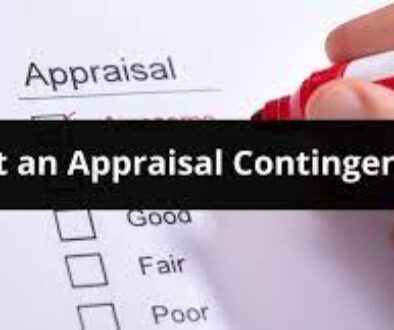Underwater Mortgage
Underwater mortgage
Do you owe more money on your home than your property is worth? If so, you have an underwater mortgage. The situation can be a headache for homeowners, particularly if you want to sell your property or refinance.
We’ll take a closer look at what happens if you are upside down on your mortgage and how to pay attention to indicators you’re heading under. We’ll also offer you a few tips on how to handle an underwater mortgage.
What Does Underwater Mortgage Mean?
An underwater mortgage, sometimes called an upside-down mortgage, is a home loan with a higher principal than the home is worth. This happens when property values fall but you still need to repay the original balance of your loan.
Mortgages aren’t the only loans that can end up underwater. Auto loans, motorcycle loans and houseboat loans can also go underwater.
How Does An Underwater Mortgage Happen?
Decrease In Property Value
Say you plan to buy a home for around $200,000. The bank orders an appraisal and the appraiser determines the home is worth $200,000. Satisfied, the bank gives you a loan for $160,000 because you put down $40,000 as a down payment.
A couple years later, you notice that your neighbours are having trouble selling their homes. While the average property value in your area was $200,000 when you bought the home, homeowners in the area have lowered their selling prices to meet the lack of demand.
Missed Payments
Your mortgage can also go underwater when you miss your mortgage payments. Let’s look at how that might happen.
When you start making payments on your loan, most of the money you pay goes toward interest. As you begin to chip away at your principal loan balance, you pay less and less in interest. This process is called amortisation.
If you fail to pay off your interest one month, that interest will accumulate. Compounding interest makes it difficult to pay back your loan and may also put you underwater.
Let’s say you borrow $130,000 to buy a home at 4% APR with a 30-year term. On your first payment due date, you owe $620.64. A total of $187.31 goes toward reducing your principal balance and the remaining $433.33 pays off the interest your loan accumulated since you took it out.
Missing your payment means that the additional amount will also accumulate interest at 4% APR. You’ll go further underwater if you don’t make a payment equal to two monthly payments the very next month.
The Trouble With Underwater Mortgages
Not having equity or negative equity in your home can cause a number of problems, from not being able to refinance to potentially losing your house.
Refinancing
You won’t be able to refinance your loan if you’re underwater. Most lenders need you to have some equity in your property before you refinance.
Selling
You might also have difficulty selling your home if your loan is underwater. Most of the time, you use the balance from the sale to pay down your existing mortgage when you sell your home.
But you might not be able to get enough money to cover all your outstanding principal when you’re underwater. This leaves you with only two options: stay in your home and keep making payments or sell the home and cover the rest from your savings. One potential solution would be to sell your home through a short sale.
Potential Of Foreclosure
Underwater mortgages also have a higher chance of going into foreclosure. A foreclosure occurs when you fall too far behind on your payments and the bank seizes your home.You might have to foreclose if you’re having trouble making your payments and you can’t refinance.
Signs Your Mortgage Is Underwater
Falling Local Property Values
Falling local property values are the first sign that your home may be going underwater. Use a real estate database to check out how much similar homes in your area are selling for. You can also talk to a local real estate expert to learn more about how market prices are predicted for your area.
Once you know how much local homes are worth, compare it to the remaining principal on your loan. Call your lender and request a “payoff statement” if you’re not sure how much you owe. A payoff statement tells you exactly how much is left on the loan, how much interest you currently owe and the exact date you’re slated to pay it off.
Low Appraisal
You can get an independent appraisal if you want a more exact idea of how much your loan is worth. An appraiser looks at the overall condition of the home and how other homes in your area are selling. An appraisal is the most accurate way to understand what your home is worth.
You’re Behind On Your Payments
There’s a good chance that your home is underwater if you’ve fallen behind on your monthly mortgage payments early on in your loan. You can work with your lender to get back on track with your loan and avoid foreclosure if you know that local property values are stable.
Contact your lender and request a payoff statement. Compare the amount you owe with the loan amount you took out. You’re underwater if your current principal is higher than it was when you first took out the loan and your home hasn’t gone up in value.
Options For Homeowners Who Have An Underwater Mortgage
Luckily, there are some avenues you can take to change your situation.
Relief Refinance Program
The Freddie Mac Enhanced Relief RefinanceSM program is a replacement program for the Home Affordability Refinance Program (HARP) that ended in 2018. An Enhanced Relief RefinanceSM can help you reduce your mortgage rate or change your interest structure.
To qualify for the Enhanced Relief RefinanceSM, you’ll need to meet the following standards:
- Freddie Mae must own your loan.
- The Note Date of your refinance must be on or after October 1, 2017.
- You must be current with your loan payments, which means you must have missed no mortgage payments in the last 12 months.
- You may not have used the HARP to refinance your loan in the past.
High Loan-To-Value Refinance
Fannie Mae’s version of the Enhanced Relief RefinanceSM is the high loan-to-value refinance. The high LTV refinance is similar to the Enhanced Relief RefinanceSM in that it allows you to change the terms of your loan even if you owe more than the home is worth.
Like the Enhanced Relief RefinanceSM, you need to meet a few qualification criteria to apply:
- Fannie Mae must own your loan.
- The Note Date of your mortgage must be on or before October 1, 2017.
- You may not have used the HARP to refinance your loan in the past.
- You must be current on your loan payments.
Short Sale
In real estate, a short sale can be an alternative to foreclosure if a homeowner is in financial crisis. A short sale occurs when a homeowner sells their home for less than the owe on their mortgage. The mortgage lender receives all of the proceeds from the sale and either forgives the difference or gets a deficiency judgement, requiring the original borrower to pay what’s left over.




